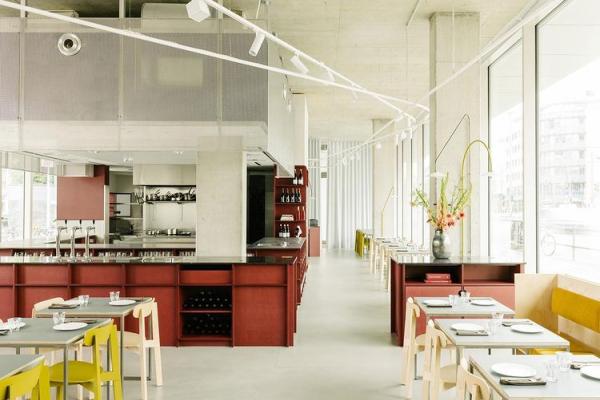Modern european cuisine
Exhibition tour with Sonja Hornung and Lena Johanna Reisner
Sat, 29 Jan 2022 15:00-17:00
Exhibition tour with Sonja Hornung and Lena Johanna Reisner
For the exhibition the 2G rule (vaccinated, recovered) applies. Please be aware that we are obliged to record your details for contact tracing.
In the decades following the Berlin Wall’s erection in 1961, many of the working-class inhabitants of Prenzlauer Berg moved to more attractive new housing in areas such as Marzahn or Hohenschönhausen. Prenzlauer Berg was literally rendered peripheral as GDR urban planners ‘decentralised’ East Berlin. Particularly from the 1980s, activists, political dissidents, and artists moved to Prenzlauer Berg and parts of Mitte, setting up alternative social structures in largely empty buildings and courtyards. During the same period, many young people left Vietnam – which was devastated by successive decolonial struggles increasingly enmeshed in deadly Cold War power interests – as contract workers to cover for labour shortages in the GDR. In East Berlin, they were also accommodated in new housing in the city’s east, often to the resentment of GDR citizens. In the years after the fall of the Wall, such areas soon came to symbolise an unwanted periphery, while large swathes of Prenzlauer Berg and Mitte became attractive centres for real estate investors and those with higher incomes.
Such reciprocal shifts between centre and periphery affect the relationship between bodies and spaces in the here-and-now. Periods of extreme insecurity and stress, such as the dismantling of economic and social infrastructure in East Berlin post-1990, or the ongoing repercussions of the Global Financial Crisis and the COVID-19 pandemic today, can affect and divide urban and social fabrics. Debt-driven real estate investment drives up prices of housing and commercial/industrial areas. Spaces generally understood to be ‘public’ or ‘shared’ tend to become even less safe for those who are marginalised, for example due to classism, racism and/or sexism. Meanwhile, non-commercial or easily accessible meeting-places are disappeared. In a city under pressure, marginalisation and segregation can mean that specific urban struggles play out in separate contexts – even when they occupy the same neighbourhoods. Yet questions relating to the post-socialist city and class-based exclusion can be dealt with in relation to ongoing colonial continuities and racist exclusions in urban spaces, and connected to the reproductive labour of taking care of urban spaces and their infrastructures. Thinking these three matters together, this exhibition brings together inter-generational aesthetic and political approaches to the question of “who belongs where”.
Prater Galerie hosted by ACUD Galerie | Veteranenstr. 21, 10119 Berlin

